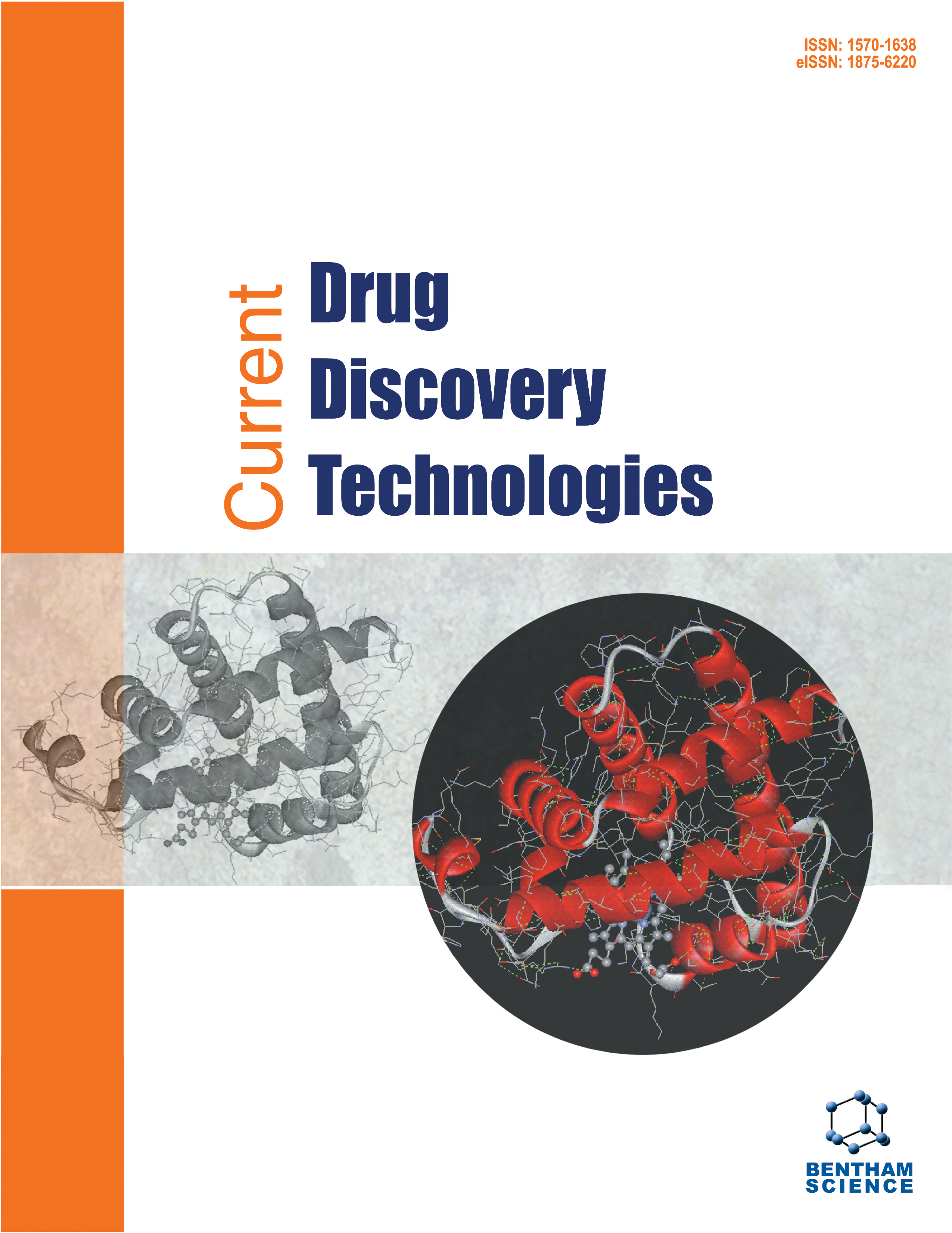- Home
- A-Z Publications
- Current Drug Discovery Technologies
- Previous Issues
- Volume 19, Issue 5, 2022
Current Drug Discovery Technologies - Volume 19, Issue 5, 2022
Volume 19, Issue 5, 2022
-
-
Plants from Genus Dracocephalum in Iran: Pharmacology and Phytochemistry Overview
More LessBackground: Genus Dracocephalum belongs to the Lamiaceae family, representing 11 species in Iran, containing D. ghahremanii Jamzad, D. lindbergii Rech. F, D. oligadenium Bornm. & Gauba, D. kotschyi Boiss., D.multicaule, D.Aucheri, D.Subcapitatum, D.Thymifolium, D.Moldavica, D. polychaetum Borm, and D. surmandinum Rech.f. The current study aimed to investigate the morphological and phytochemical propertie Read More
-
-
-
Inhibitory Effect of Standardized Extract and Fractions of Nigella sativa L. on Nystatin Susceptible and Clinically Nystatin Resistant Candida albicans
More LessIntroduction: Candidiasis infection is caused by different species of Candida, which are characterized by host immunologic weakness. Black cumin seeds (Nigella sativa) have shown an inhibitory effect against Candida albicans. In this work, the inhibitory effect of standardized extract and different fractions of Nigella sativa seeds has been evaluated on both nystatin-susceptible and resistant strain of C. albicans. Materials a Read More
-
-
-
Effects of Combined Garcinia kola and Kigelia africana on Insulin and Paraoxonase 1 (PON1) Levels in Type 2 Diabetic Rats
More LessAuthors: Adams Omoaghe, Olusoji Oyesola, Tony Ezike, Blessing Omizu and Kukoyi BooneBackground: Individual extracts of Garcinia kola and Kigelia africana have been shown to have therapeutic effects against a variety of variables linked to the development of diabetes mellitus. However, there is still a lack of information about the combined effects of these extracts on Insulin and Paraoxonase 1 (PON-1) in Streptozotocin-Nicotinamide-induced type-2 diabetic Wistar rats. Methods: Forty-two young male rats (18 Read More
-
-
-
Comparing the Effects of a Herbal Drug based on Echium Amoenum With Fluvoxamine in the Treatment of Adolescents with Obsessive-compulsive Disorder
More LessBackground: Obsessive-compulsive disorder (OCD) is a severe and debilitating neuropsychiatric condition. Although selective serotonin reuptake inhibitors, tricyclic antidepressants, and cognitive- behavioral therapy are the first-line medication and treatment for OCD, an estimated 30% of patients are treatment-resistant, and complete functional recovery is rare. Natural products as adjuvant or alternative therapies should Read More
-
-
-
Computer-Aided Identification of Cholinergic and Monoaminergic Inhibitory Flavonoids from Hibiscus sabdariffa L.
More LessBackground: The reduced levels of acetylcholine and dopamine lead to Alzheimer's disease (AD) and Parkinson's disease PD, respectively, due to the action of cholinesterase and monoamine oxidase B. Methods: Therapeutic options for AD and PD involve respective cholinergic and monoaminergic inhibitors, and considering the adverse outcomes of cholinergic- and monoaminergic- inhibitory therapeutics, phytocons Read More
-
-
-
Hypoxic Gas Therapy in Neonatology: Considerations in Practice
More LessBackground: Adequate oxygenation is essential for sick newborns. Each disease determines the target of oxygenation. Nevertheless, hyperoxia and hypoxia are related to adverse outcomes. Most studies related to this aspect have been conducted in preterm infants or term babies with pulmonary pathology. Introduction: Congenital heart diseases may also require careful oxygenation control and management of oxygen Read More
-
-
-
Clinical Evidence for the Effectiveness of Herbal Medicines in the Treatment of an Obsessive- Compulsive Disorder: A Review Study
More LessBackground: Obsessive-compulsive disorder (OCD) is a potentially debilitating disease that affects 1-4% of the general population. It is characterized by the presence of obsessions and compulsions which interfere with the individual's life and functioning. Although conventional treatments such as drug therapies and cognitive behavioral therapy exist for OCD, these treatments are not universally successful and c Read More
-
-
-
Anti-proliferative Activity of Labdane Diterpenes Isolated from Polyalthia cerasoides and their Molecular Interaction Studies
More LessBackground: Polyalthia cerasoides is well known for its therapeutic effects and is extensively used by the tribal people of South India and Africa to treat infertility, toothache, inflammation, rheumatism, fever, and to combat stress. Objective: In the present research, the anti-proliferative potential of two bioactive compounds isolated from the stem bark of P. cerasoides (Roxb.) Bedd. of the Annonaceae family was investiga Read More
-
Volumes & issues
-
Volume 22 (2025)
-
Volume 21 (2024)
-
Volume 20 (2023)
-
Volume 19 (2022)
-
Volume 18 (2021)
-
Volume 17 (2020)
-
Volume 16 (2019)
-
Volume 15 (2018)
-
Volume 14 (2017)
-
Volume 13 (2016)
-
Volume 12 (2015)
-
Volume 11 (2014)
-
Volume 10 (2013)
-
Volume 9 (2012)
-
Volume 8 (2011)
-
Volume 7 (2010)
-
Volume 6 (2009)
-
Volume 5 (2008)
-
Volume 4 (2007)
-
Volume 3 (2006)
-
Volume 2 (2005)
-
Volume 1 (2004)
Most Read This Month
Article
content/journals/cddt
Journal
10
5
false
en


